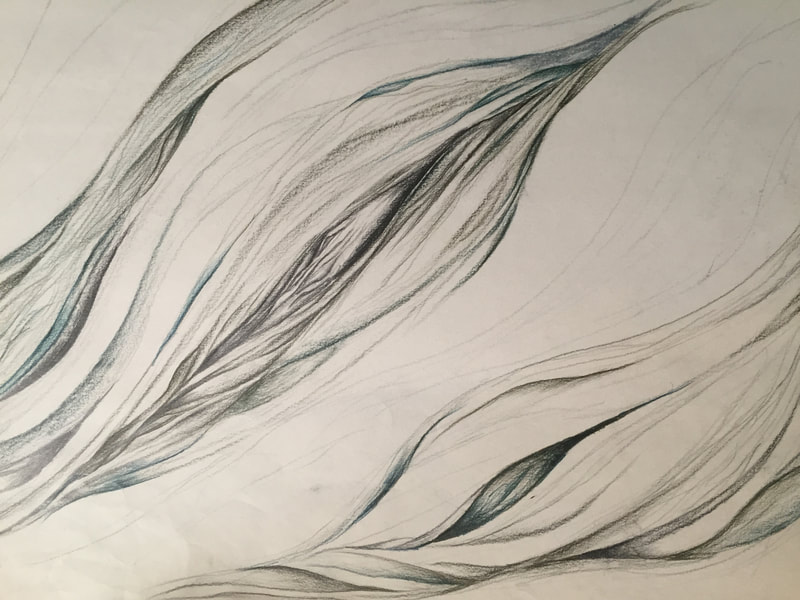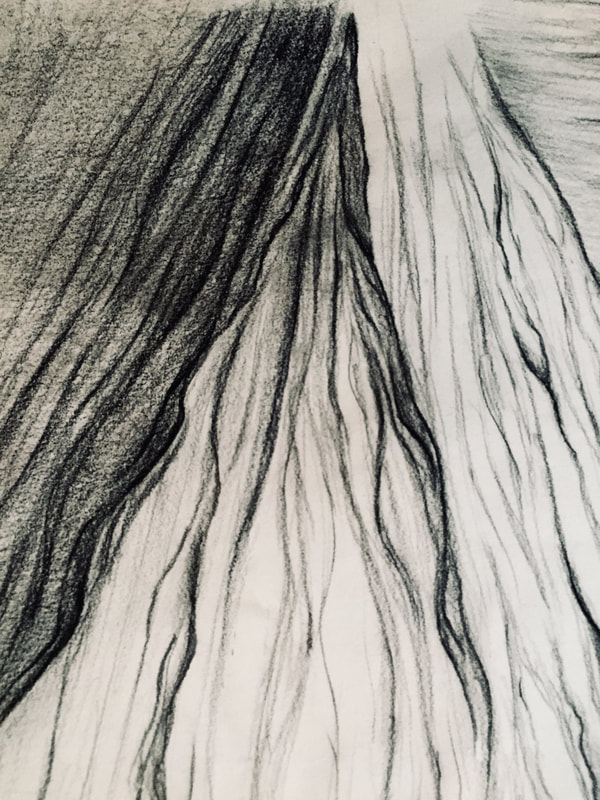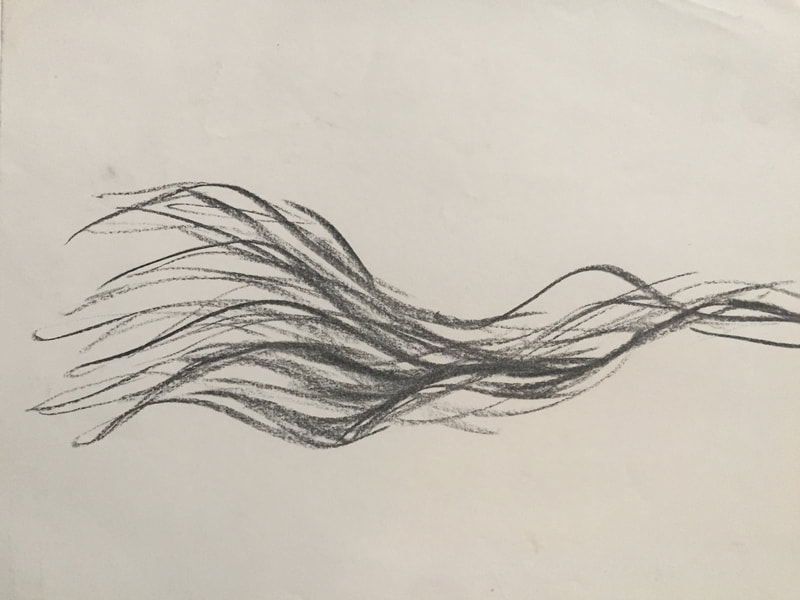Exploring the Depths: Abstract Line Drawings and the Incompleteness of the Human Psyche
Art has long been a medium through which humans have attempted to capture the complex and often enigmatic nature of the human psyche. One intriguing avenue of artistic exploration is the use of abstract line drawings to represent the profound sense of incompleteness that characterizes our inner worlds. These drawings, devoid of the constraints of realism, tap into the subconscious and offer viewers a visual journey into the depths of the mind.
The Essence of Incompleteness
Abstract line drawings that delve into the incompleteness of the human psyche are not concerned with portraying easily recognizable forms or figures. Instead, they employ a minimalist approach, using lines and shapes to evoke emotions, thoughts, and states of being that are difficult to express through conventional imagery.
The incompleteness of the human psyche is rooted in the inherent complexity of our emotions, experiences, and thoughts. We are beings in a constant state of change and evolution, and our understanding of ourselves is often fragmented, shifting, and layered. Abstract line drawings provide a unique artistic avenue to explore this intricate web of feelings and perceptions.
Lines as Pathways to the Subconscious
In these drawings, lines take on a significant role. They can represent the pathways that lead to the subconscious, a realm where emotions and memories are stored, often hidden from conscious awareness. The use of lines can create a sense of movement, guiding the viewer's eye through the composition and, metaphorically, through the labyrinthine corridors of the mind.
These lines can be jagged and erratic, reflecting the turbulence of our inner conflicts and unresolved emotions. Alternatively, they might be gentle and flowing, representing moments of clarity and introspection. The interplay of these contrasting lines mirrors the ebb and flow of our psychological landscape, highlighting the constant negotiation between the conscious and the unconscious.
Shapes and Void: The Dance of Wholeness and Fragmentation
Shapes in abstract line drawings are equally important. They can embody different facets of the human experience, from harmony to discord, from unity to disintegration. Often, these shapes appear fragmented, with voids and negative spaces that speak to the gaps in our self-understanding. These voids are not meant to be negative per se; they are the spaces where growth, introspection, and transformation occur.
The shapes and voids in these drawings symbolize the duality of our existence. We strive for wholeness and integration, yet we grapple with fragmentation and uncertainty. This tension is an integral part of the human experience, and abstract line drawings provide a visual vocabulary to express this complexity.
Color and Emotion: A Subtle Palette
Color, when used sparingly in abstract line drawings, can amplify the emotional resonance of the artwork. Subtle shades and tones can evoke different emotions and states of mind. Blues and grays might signify introspection and melancholy, while bursts of red could convey intensity and passion. The limited color palette mirrors the limited understanding we often have of our own emotions – we glimpse only parts of the emotional spectrum, and much remains uncharted.
Inviting Interpretation
One of the fascinating aspects of abstract line drawings exploring the incompleteness of the human psyche is the space they leave for individual interpretation. Each viewer brings their own experiences, emotions, and thoughts to the artwork, resulting in a deeply personal engagement. This interactive element mirrors the uniqueness of our inner worlds – no two interpretations are exactly alike, just as no two psyches are identical.
In a world that often demands clear-cut answers and well-defined boundaries, these abstract line drawings embrace ambiguity and uncertainty. They celebrate the beauty in the incomplete, inviting us to embrace the intricacies of our psyche and find solace in the journey of self-discovery.
Abstract line drawings that venture into the realm of the human psyche's incompleteness provide a canvas for exploring the profound layers of our inner worlds. Through the interplay of lines, shapes, voids, and color, these artworks capture the complexity, turbulence, and beauty of our emotions, experiences, and thoughts. As viewers engage with these drawings, they embark on a visual and emotional expedition into the depths of the mind, embracing the enigma of their own incomplete selves.
The Essence of Incompleteness
Abstract line drawings that delve into the incompleteness of the human psyche are not concerned with portraying easily recognizable forms or figures. Instead, they employ a minimalist approach, using lines and shapes to evoke emotions, thoughts, and states of being that are difficult to express through conventional imagery.
The incompleteness of the human psyche is rooted in the inherent complexity of our emotions, experiences, and thoughts. We are beings in a constant state of change and evolution, and our understanding of ourselves is often fragmented, shifting, and layered. Abstract line drawings provide a unique artistic avenue to explore this intricate web of feelings and perceptions.
Lines as Pathways to the Subconscious
In these drawings, lines take on a significant role. They can represent the pathways that lead to the subconscious, a realm where emotions and memories are stored, often hidden from conscious awareness. The use of lines can create a sense of movement, guiding the viewer's eye through the composition and, metaphorically, through the labyrinthine corridors of the mind.
These lines can be jagged and erratic, reflecting the turbulence of our inner conflicts and unresolved emotions. Alternatively, they might be gentle and flowing, representing moments of clarity and introspection. The interplay of these contrasting lines mirrors the ebb and flow of our psychological landscape, highlighting the constant negotiation between the conscious and the unconscious.
Shapes and Void: The Dance of Wholeness and Fragmentation
Shapes in abstract line drawings are equally important. They can embody different facets of the human experience, from harmony to discord, from unity to disintegration. Often, these shapes appear fragmented, with voids and negative spaces that speak to the gaps in our self-understanding. These voids are not meant to be negative per se; they are the spaces where growth, introspection, and transformation occur.
The shapes and voids in these drawings symbolize the duality of our existence. We strive for wholeness and integration, yet we grapple with fragmentation and uncertainty. This tension is an integral part of the human experience, and abstract line drawings provide a visual vocabulary to express this complexity.
Color and Emotion: A Subtle Palette
Color, when used sparingly in abstract line drawings, can amplify the emotional resonance of the artwork. Subtle shades and tones can evoke different emotions and states of mind. Blues and grays might signify introspection and melancholy, while bursts of red could convey intensity and passion. The limited color palette mirrors the limited understanding we often have of our own emotions – we glimpse only parts of the emotional spectrum, and much remains uncharted.
Inviting Interpretation
One of the fascinating aspects of abstract line drawings exploring the incompleteness of the human psyche is the space they leave for individual interpretation. Each viewer brings their own experiences, emotions, and thoughts to the artwork, resulting in a deeply personal engagement. This interactive element mirrors the uniqueness of our inner worlds – no two interpretations are exactly alike, just as no two psyches are identical.
In a world that often demands clear-cut answers and well-defined boundaries, these abstract line drawings embrace ambiguity and uncertainty. They celebrate the beauty in the incomplete, inviting us to embrace the intricacies of our psyche and find solace in the journey of self-discovery.
Abstract line drawings that venture into the realm of the human psyche's incompleteness provide a canvas for exploring the profound layers of our inner worlds. Through the interplay of lines, shapes, voids, and color, these artworks capture the complexity, turbulence, and beauty of our emotions, experiences, and thoughts. As viewers engage with these drawings, they embark on a visual and emotional expedition into the depths of the mind, embracing the enigma of their own incomplete selves.



